PLA2G2A
-
Official Full Name
phospholipase A2, group IIA (platelets, synovial fluid) -
Overview
Phospholipase A2 (PLA2) catalyzes the hydrolysis of fatty acids at the sn-2 position of glycerophospholipids. PLA2 (Type V) is a secretory PLA2 (sPLA2) of approximately 14 kDa and is one of the isoforms in the growing list of the PLA2 enzyme family.2 This enzyme, rather than the sPLA2 (Type II), is responsible for arachidonic acid mobilization leading to prostaglandin production in macrophages and mast cells. Consistent with this role, sPLA2 (Type V) is associated with the golgi apparatus, nuclear envelope, and plasma membrane in murine bone marrow-derived mast cells. sPLA2 (Type V) has been cloned from a variety of species including human, mouse, and rat. The enzyme is expressed in heart, lung, placenta, and spleen, as well as P388D1 macrophages and mast cells -
Synonyms
PLA2G2A;phospholipase A2, group IIA (platelets, synovial fluid);phospholipase A2, membrane associated;GIIC sPLA2;enhancing factor;modifier of Min1;group IIA phospholipase A2;secretory group II phospholipase A2;phosphatidylcholine 2-acylhydrolase 2A;non-pancreatic secreted type II phospholipase A2;EF;Mom1;Pla2;sPLA2;sPla2-IIA
Recombinant Proteins
- Human
- Mouse
- Rat
- Chicken
- HEK293
- Insect Cells
- Sf21 Cells
- E.coli
- Mammalian Cells
- Human Cells
- Yeast
- His
- Non
- GST
- Avi
- Fc
- DDK
- Myc
- Flag
- SUMO
Background
What is PLA2G2A protein?
PLA2G2A (phospholipase A2 group IIA) gene is a protein coding gene which situated on the short arm of chromosome 1 at locus 1p36. Several alternatively spliced transcript variants with different 5' UTRs have been found for this gene. The protein encoded by this gene is a member of the phospholipase A2 family (PLA2). This gene product belongs to group II, which contains secreted form of PLA2, an extracellular enzyme that has a low molecular mass and requires calcium ions for catalysis. The PLA2G2A protein is consisted of 144 amino acids and its molecular mass is approximately 16.1 kDa.
What is the function of PLA2G2A protein?
Its main function is to catalyze the hydrolysis of phospholipids on the cell membrane, thus producing free fatty acids and lysed lecithin. In addition, PLA2G2A is involved in cell membrane remodeling and repair processes, changing the composition and properties of the cell membrane by hydrolyzing phospholipids on the membrane. It can also regulate the balance of energy metabolism in the body by affecting the release and oxidation of fatty acids. It can also affect the production and clearance of intracellular reactive oxygen species.
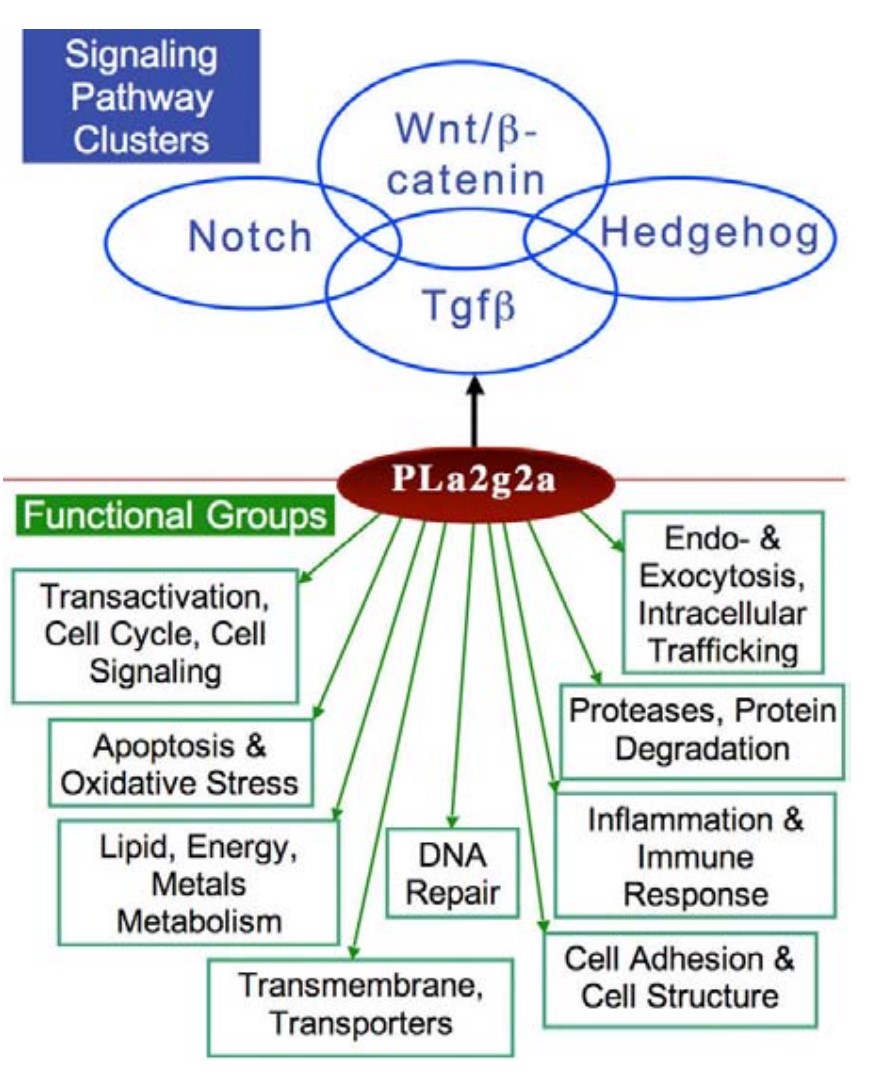
Fig1. Effects of Pla2g2a on gene expression, functional groups and key signaling pathways in colon (tumorigenesis). (Remond J A Fijneman, 2008)
PLA2G2A Related Signaling Pathway
PLA2G2A, as a member of the phospholipase A2 family, is directly involved in the phosphatidylinositol diesterase A2 (PLA2) signaling pathway, which is involved in the activation and regulation of PLA2 family enzymes and the hydrolysis of phosphatidylinositol diester substrates. PLA2G2A catalyzes the hydrolysis of phospholipids to produce arachidonic acid, a rate-limiting step in the production of bioactive substances such as prostaglandins and platelet activating factors.
PLA2G2A Related Diseases
PLA2G2A is involved in inflammation and lipid deposition after intima injury, promoting the formation of atherosclerotic plaques. PLA2G2A is highly expressed in a variety of tumor cells, including colon cancer, breast cancer, and prostate cancer. In addition, it is also associated with some intestinal diseases such as inflammatory bowel disease, liver diseases such as hepatitis, cirrhosis and so on.
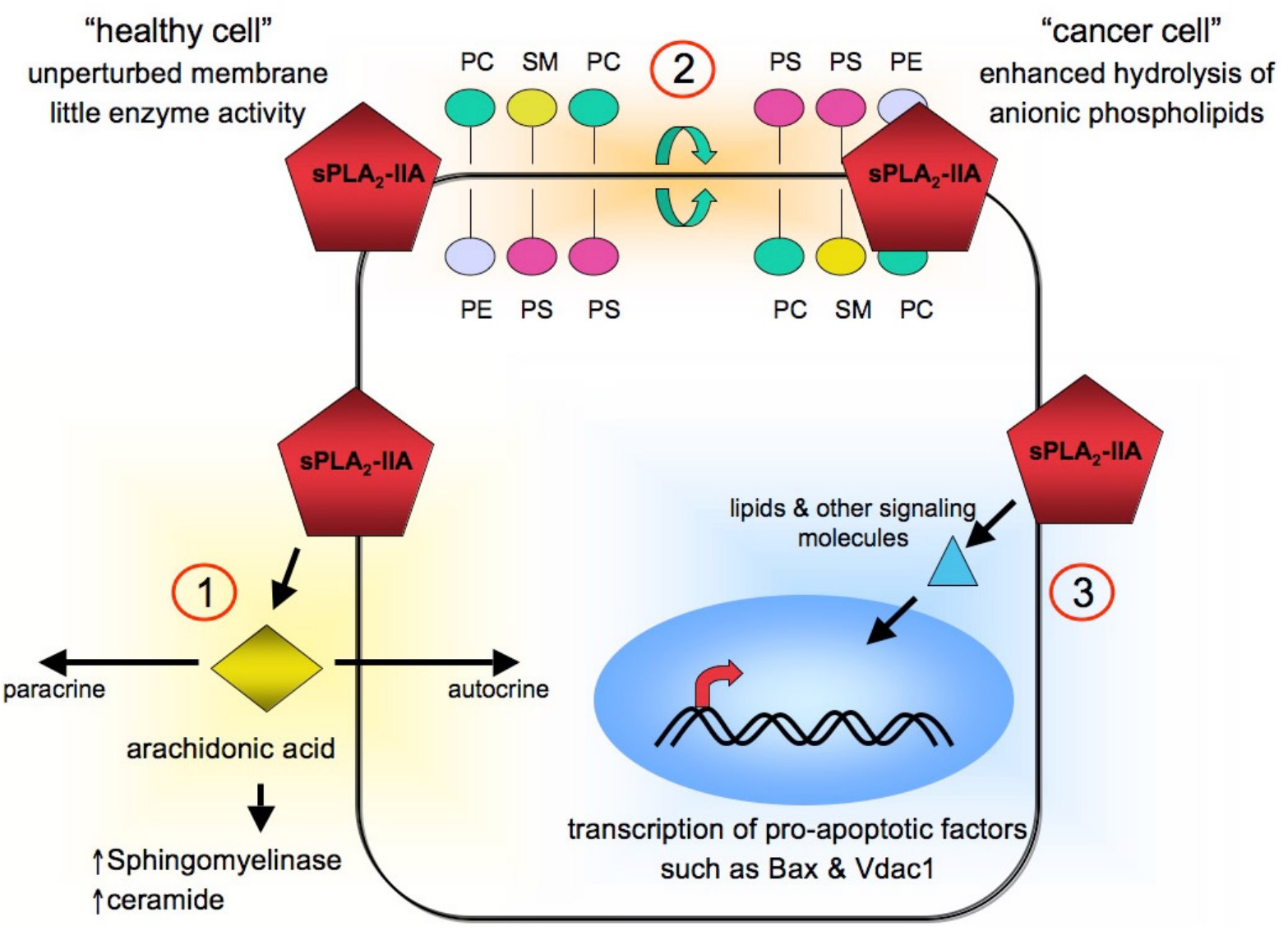
Fig2. Model 2: sPLA2-IIA promotes apoptosis of cancer cells. (Remond J A Fijneman, 2008)
Case Study
Case study 1: Mingquan Zhang, 2022
Oncogenic K-ras is often activated in pancreatic ductal adenocarcinoma (PDAC) due to frequent mutation (>90%), which drives multiple cellular processes, including alterations in lipid metabolism associated with a malignant phenotype. However, the role and mechanism of the altered lipid metabolism in K-ras-driven cancer remains poorly understood.
In this study, using human pancreatic epithelial cells harboring inducible K-rasG12D (HPNE/K-rasG12D) and pancreatic cancer cell lines, the expression of phospholipase A2 group IIA (PLA2G2A) was upregulated by oncogenic K-ras. The elevated expression of PLA2G2A was also observed in pancreatic cancer tissues. Abrogation of PLA2G2A by siRNA or by pharmacological inhibition using tanshinone I significantly increased lipid peroxidation.
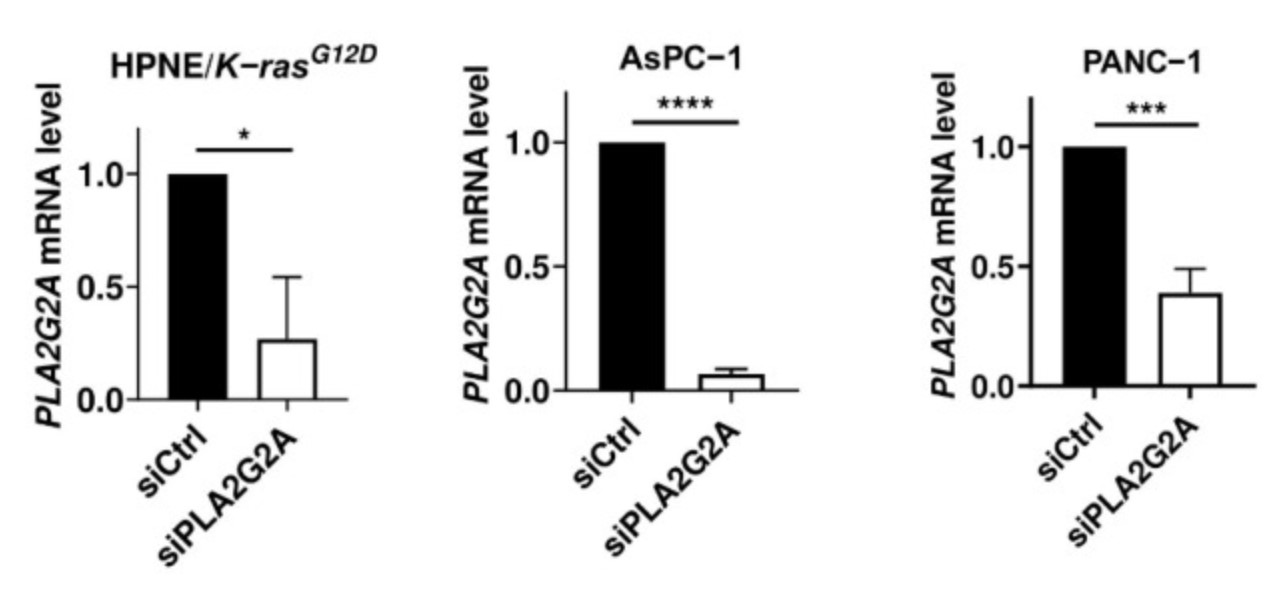
Fig1. ANC-1, AsPC-1, and HPNE/K-rasG12D cells (stably induced with doxycycline to express oncogenic K-ras for 1 month) were transfected with 50 nM siRNA against PLA2G2A for 72 h, and the PLA2G2A mRNA level was quantified by qRT-PCR.
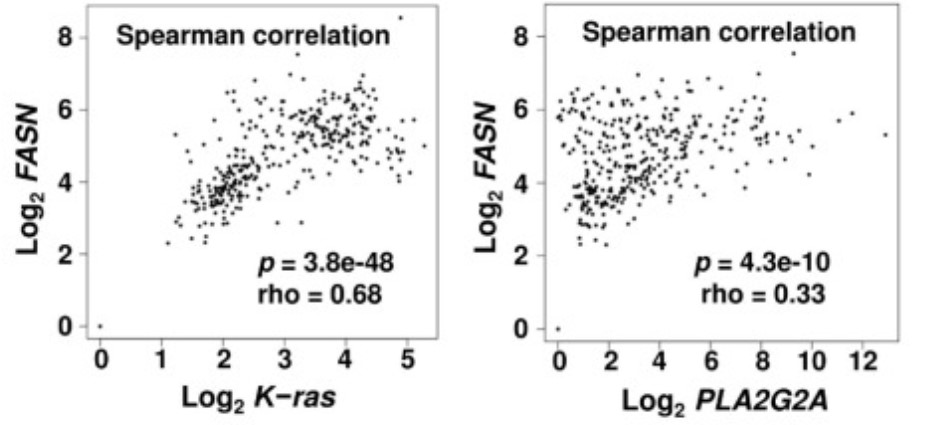
Case study 2: Michael S Kuefner, 2017
Secretory phospholipase A2 group IIA (PLA2G2A) is a member of a family of secretory phospholipases that have been implicated in inflammation, atherogenesis, and antibacterial actions. Here, the researchers evaluated the role of PLA2G2A in the metabolic response to a high fat diet.
C57BL/6 (BL/6) mice do not express PLA2g2a due to a frameshift mutation. They fed BL/6 mice expressing the human PLA2G2A gene (IIA+ mice) a fat diet and assessed the physiologic response. After 10 weeks on the high fat diet, the BL/6 mice were obese, but the IIA+ mice did not gain weight or accumulate lipid. The IIA+ mice had increased expression of uncoupling protein 1 (UCP1), sirtuin 1 (SIRT1), and PPARγ coactivator 1α (PGC-1α) in brown adipose tissue (BAT), suggesting that PLA2G2A activates mitochondrial uncoupling in BAT.
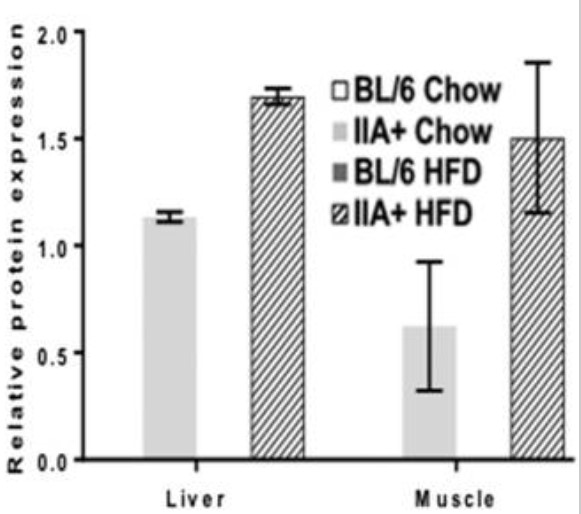
Fig3. PLA2G2A protein expression from livers of chow diet or HFD mice.
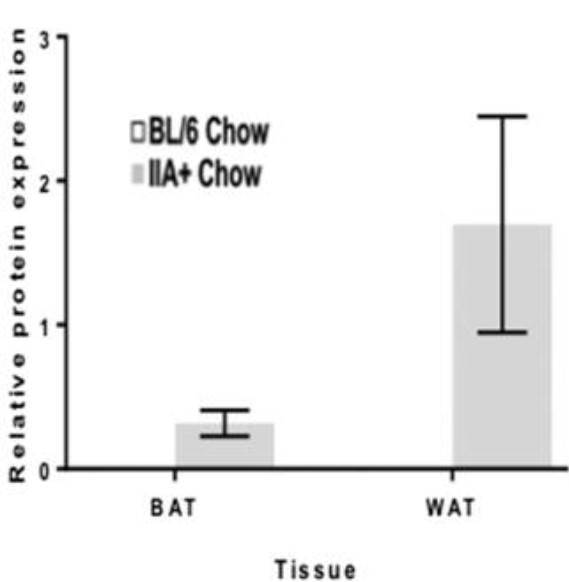
Quality Guarantee
High Purity
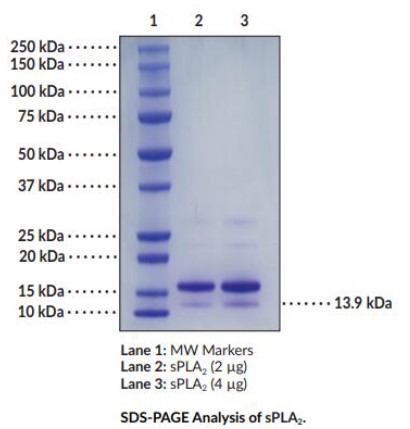
Fig1. SDS-PAGE (PLA2G2A-12H) (PROTOCOL for western blot)
.
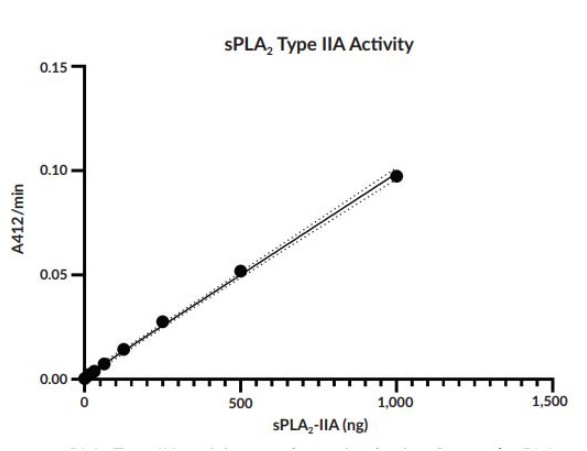
Fig2. Activity Data. (PLA2G2A-12H)
Involved Pathway
PLA2G2A involved in several pathways and played different roles in them. We selected most pathways PLA2G2A participated on our site, such as Glycerophospholipid metabolism,Ether lipid metabolism,Arachidonic acid metabolism, which may be useful for your reference. Also, other proteins which involved in the same pathway with PLA2G2A were listed below. Creative BioMart supplied nearly all the proteins listed, you can search them on our site.
| Pathway Name | Pathway Related Protein |
|---|---|
| Ras signaling pathway | PDGFD,GRIN2A,PIK3R2,PLCG1,ANGPT1,CALM2,CDC42,FIGF,FGF17,FGF20 |
| Pancreatic secretion | RAB3D,ATP1A2,ATP1B3,PLCB2,AMY2A4,SLC4A4,PRSS3,PRKCG,CPA1,PNLIP |
| Fat digestion and absorption | APOB,AGPAT2,MTTP,ABCA1,APOA4,PLA2G3,PNLIPRP2,MOGAT2,PPAP2A,PLA2G10 |
| Metabolic pathways | BCO1L,PISD,AGPAT3,COX5AA,EARS2,aLA,MTHFD2,HSD3B4,FLAD1,GUSB |
| Glycerophospholipid metabolism | GPD1B,TAZ,ACHE,DGKD,PCYT2,LPIN1,PCYT1A,GPD1,PPAP2C,DGKG |
| alpha-Linolenic acid metabolism | ACAA1A,PLA2G4A,PLA2G5,PLA2G4AA,FADS2,PLA2G1B,PLA2G4F,PLA2G12A,PLA2G2D,PLA2G4D |
| Linoleic acid metabolism | ALOX15,PLB1,PLA2G2E,CYP2C54,CYP2C37,CYP2C39,PLA2G1B,CYP2P10,CYP2P8,PLA2G2D |
| Ether lipid metabolism | PLA2G2E,PLA2G1B,PLA2G2F,LPCAT4,PLA2G4F,PAFAH1B1B,PLA2G5,LPCAT1,PLD1,UGT8A |
| Vascular smooth muscle contraction | CALM1B,KCNMB3,PLA2G4D,PPP1R14A,CALM1,ITPR1,CALM3A,ACTG2,PPP1CAB,CALM4 |
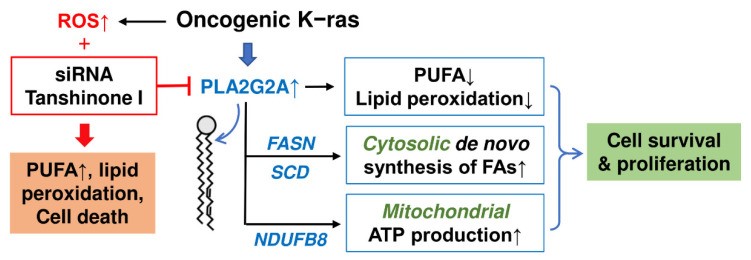
Fig1. Schematic illustration of the mechanisms by which the upregulation of PLA2G2A by oncogenic K-ras promotes PDAC cell survival. (Mingquan Zhang, 2022)
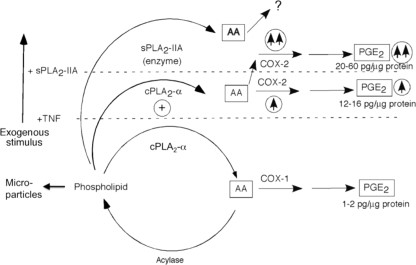
Fig2. Model of sPLA2-IIA function in FLS AA metabolism. (Katherine J Bryant, 2011)
Protein Function
PLA2G2A has several biochemical functions, for example, calcium ion binding,calcium-dependent phospholipase A2 activity,phospholipase A2 activity. Some of the functions are cooperated with other proteins, some of the functions could acted by PLA2G2A itself. We selected most functions PLA2G2A had, and list some proteins which have the same functions with PLA2G2A. You can find most of the proteins on our site.
| Function | Related Protein |
|---|---|
| calcium ion binding | FAT1A,EHD4,CAPN2A,CD93,MYL10,MMP12,SYT1A,PCDH1G31,CDH24,SPNA2 |
| phospholipid binding | ARHGAP44,NR5A1,TEC,SPTBN2,OSBPL1A,PLA2G4C,CPS1,BPIFC,PACSIN1,LC3 |
| phospholipase A2 activity | PLA2G2E,PLA2G4AA,PLA2G16,PLA2G12B,PNPLA3,PLA2G2F,RARRES3,PLA2G2D,PRDX6,OC90 |
| calcium-dependent phospholipase A2 activity | PLA2G5,PLA2G4B,PLA2G3,PLA2G1B,PLA2G4F,PLA2G12A,PLA2G4A |
Interacting Protein
PLA2G2A has direct interactions with proteins and molecules. Those interactions were detected by several methods such as yeast two hybrid, co-IP, pull-down and so on. We selected proteins and molecules interacted with PLA2G2A here. Most of them are supplied by our site. Hope this information will be useful for your research of PLA2G2A.
ALOX12;CRMP1;CRELD2;CEP70
Resources
Research Area
Related Services
Related Products
References



